On occasional mornings across late spring and early summer, spiderwebs pop up everywhere, all at once, only to go away after a day or two. It’s magic. The near mirror image of the spiderwebs and clouds struck me as beautiful. What calls the spiders to all build their nests the same night? The length of the photo period? Temperature? It’s all in their DNA.
Speaking of clouds, here is a cloud “explosion.”
Whose nest did I come upon? A killdeer?
I presume this alien life form is a golden oyster mushroom. Below are some more.
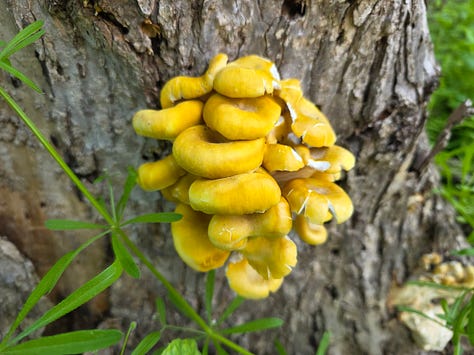
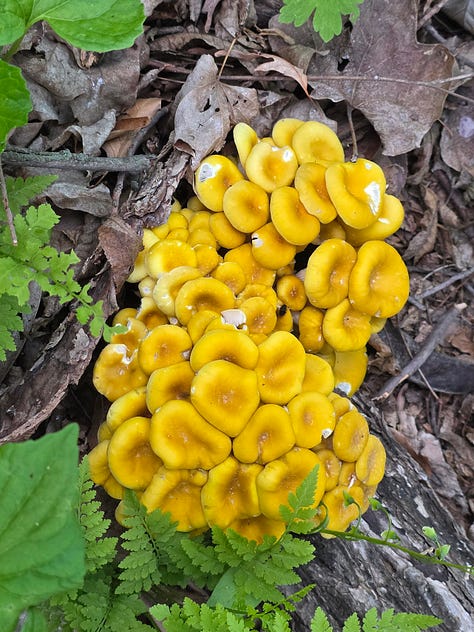
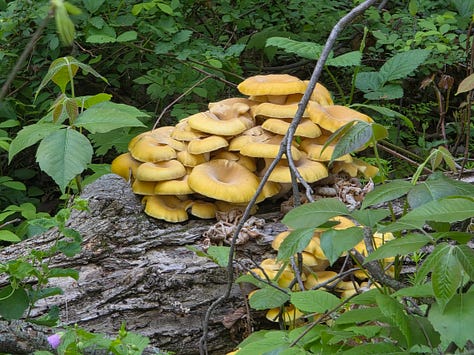
Golden Oyster Mushrooms aren’t native to North America. They are native to subtropical hardwood forests of eastern Russia, northern China, and Japan, and have long been considered an important culinary mushroom across Asia.
The first sightings in North America were in 2012, and they can now be considered a naturalized and invasive species. They have been observed in Delaware, Illinois, Iowa, Maryland, Massachusetts, Michigan, Minnesota, New York, Ohio, Pennsylvania, and Wisconsin. You can fry them in butter like morels, and they are delicious.
Mayapples have been in bloom for a couple of weeks.
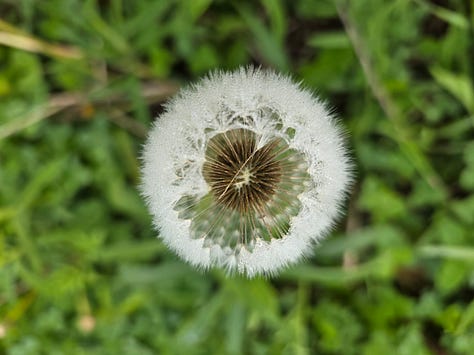
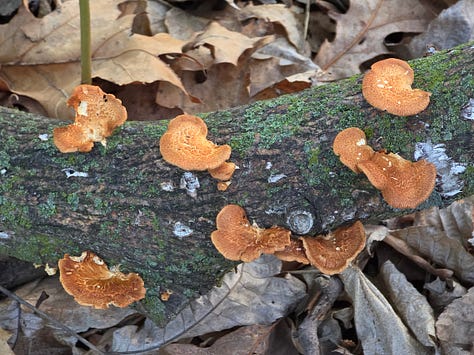
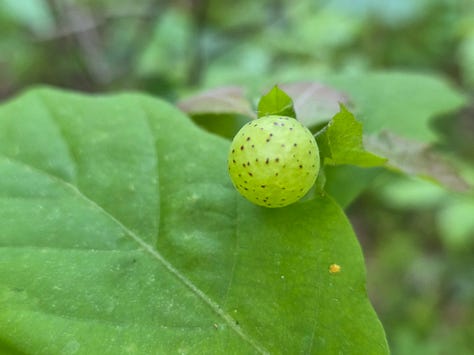
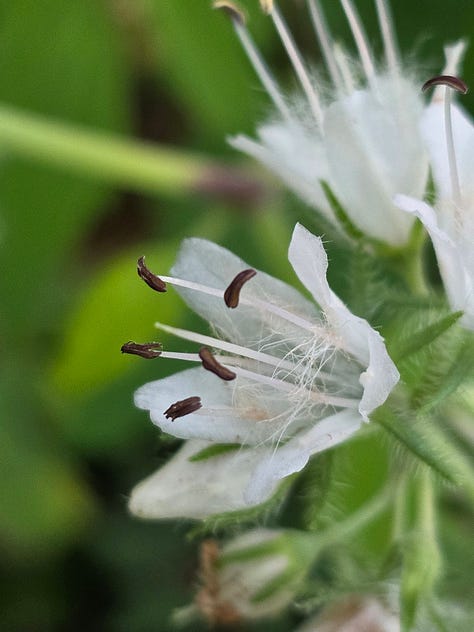
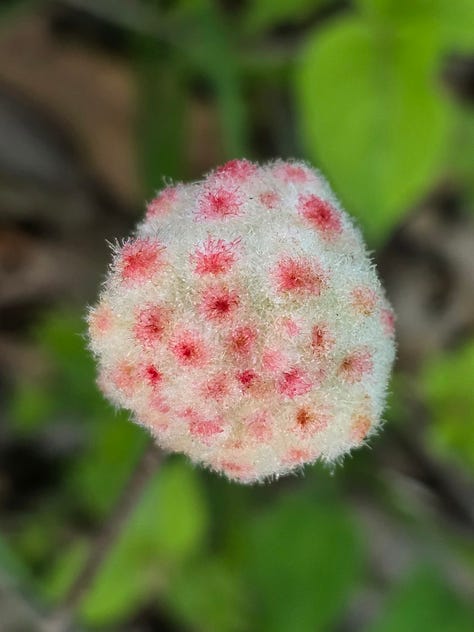
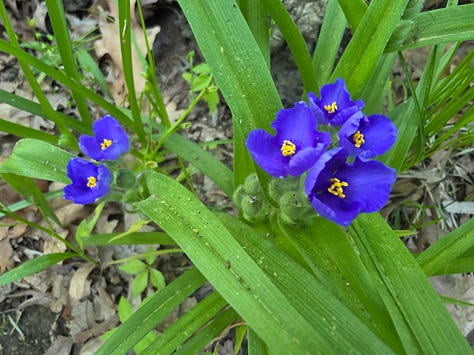
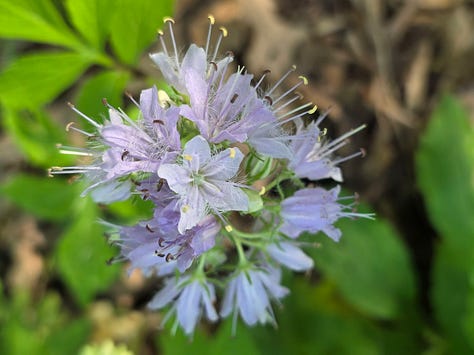
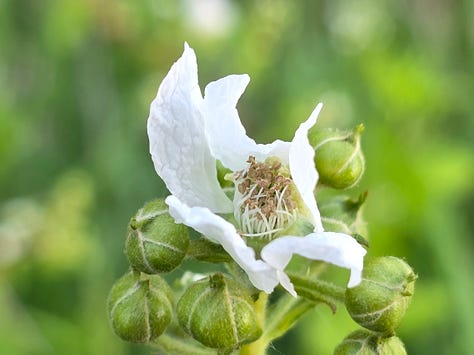

I believe this is part of the wing of the Cecropia Moth, our largest moth. I found one when I was about seven years old, and have been fascinated by them ever since. Look at the fine structure of the wing. Notice that the wing has a component that looks like an eye. Some scientists believe it deters predation because an assailant might consider that it is dealing with a larger animal than it is. Other scientists believe the contrast might be startling, and frighten off the predator. It didn’t work in this case.
I was at a history conference last week, and one presenter showed the above slide, illustrating how far one is from a national park. Note that Iowa is as far from a national park as possible. This is because the National Park System was constructed to avoid economically valuable land, which is a travesty. As such, the beauty of our plains states and the protection of our natural ecosystems were deemed unimportant, with devastating consequences for habitat.
Which means that our state, city, and county parks are even more important than is often realized, and that all of us need to work hard to protect them from being turned into developments or farmland. Too many elected officials think only of our public lands in terms of costs, when they are investments that enrich our lives for generations.
Thanks for reading! Here are four of my favorite nature Substacks: Larry Stone’s “Listening to the Land,” Diane Porter’s My Gaia, Al Batt’s Al’s Substack, and Jaron Sedlock’s Jaron’s Curious Adventures. Please consider subscribing. All will entertain, educate, and soothe your soul.
I’m a member of the Iowa Writers Collaborative. Please sample the talents of my fellow collaborative members. If you can afford to be a paid subscriber, that would be great. If not, the vast majority of content is free.

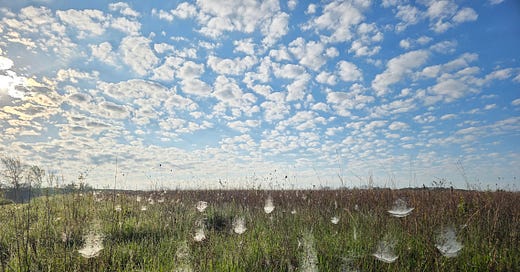





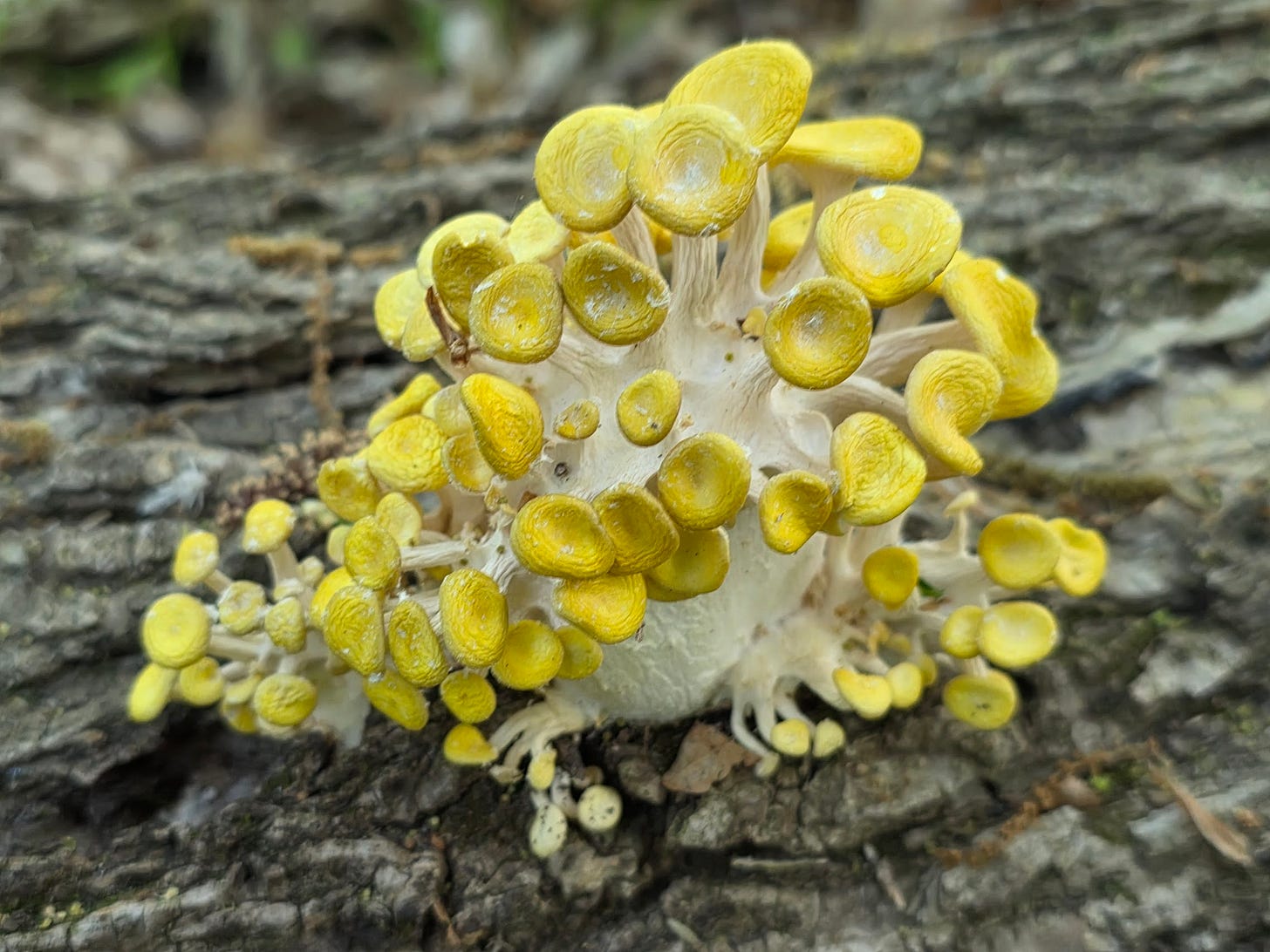
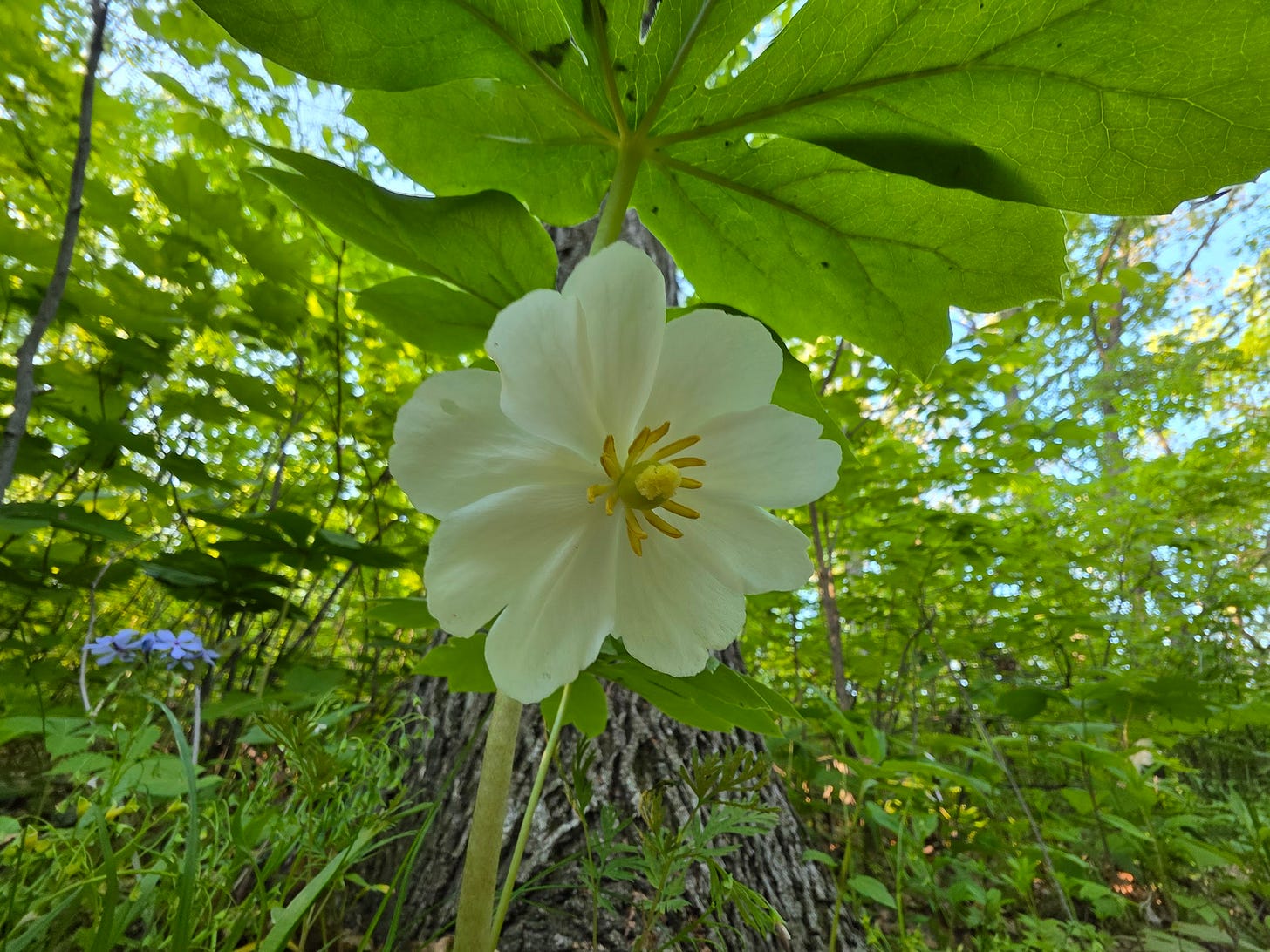
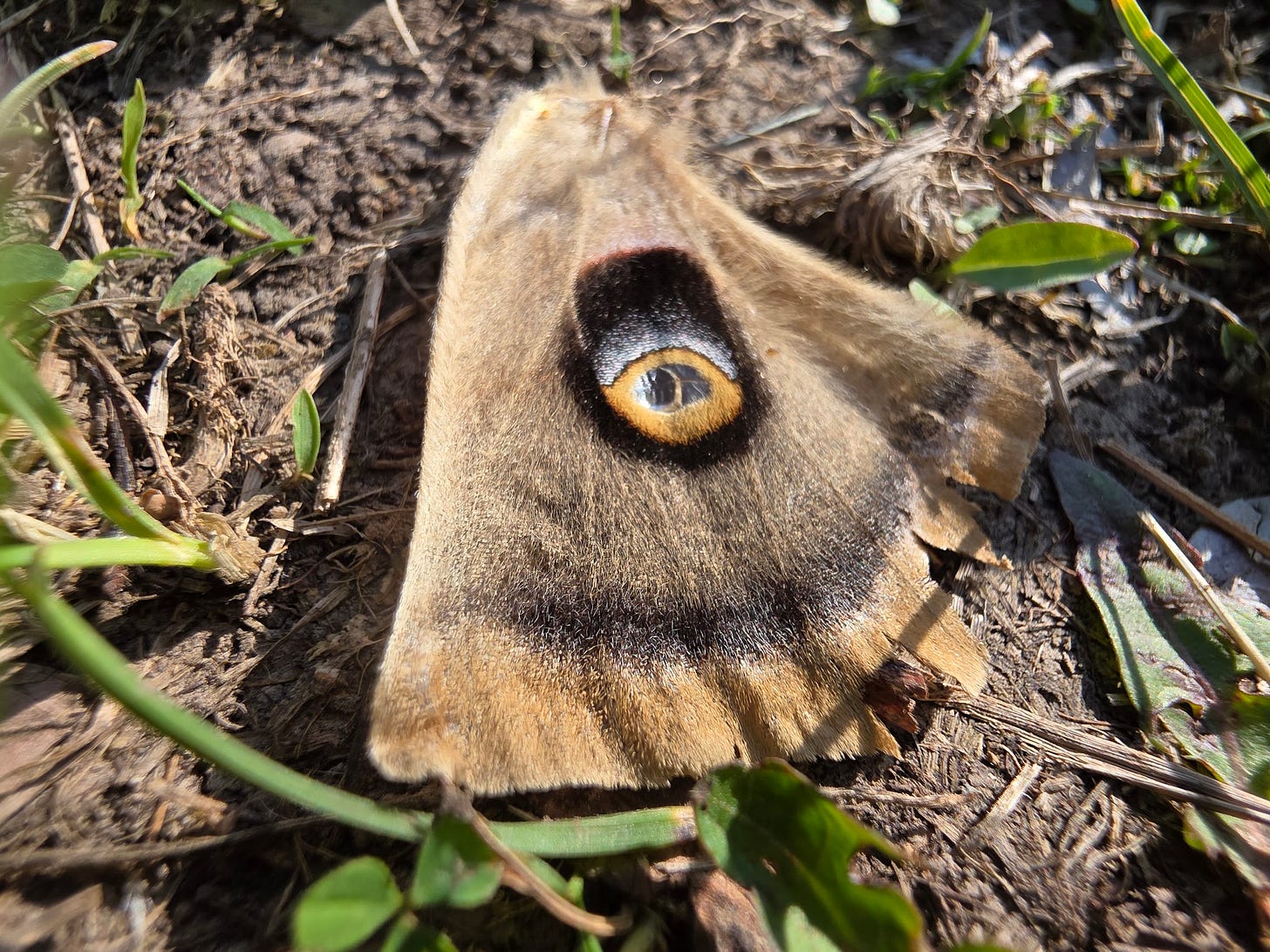
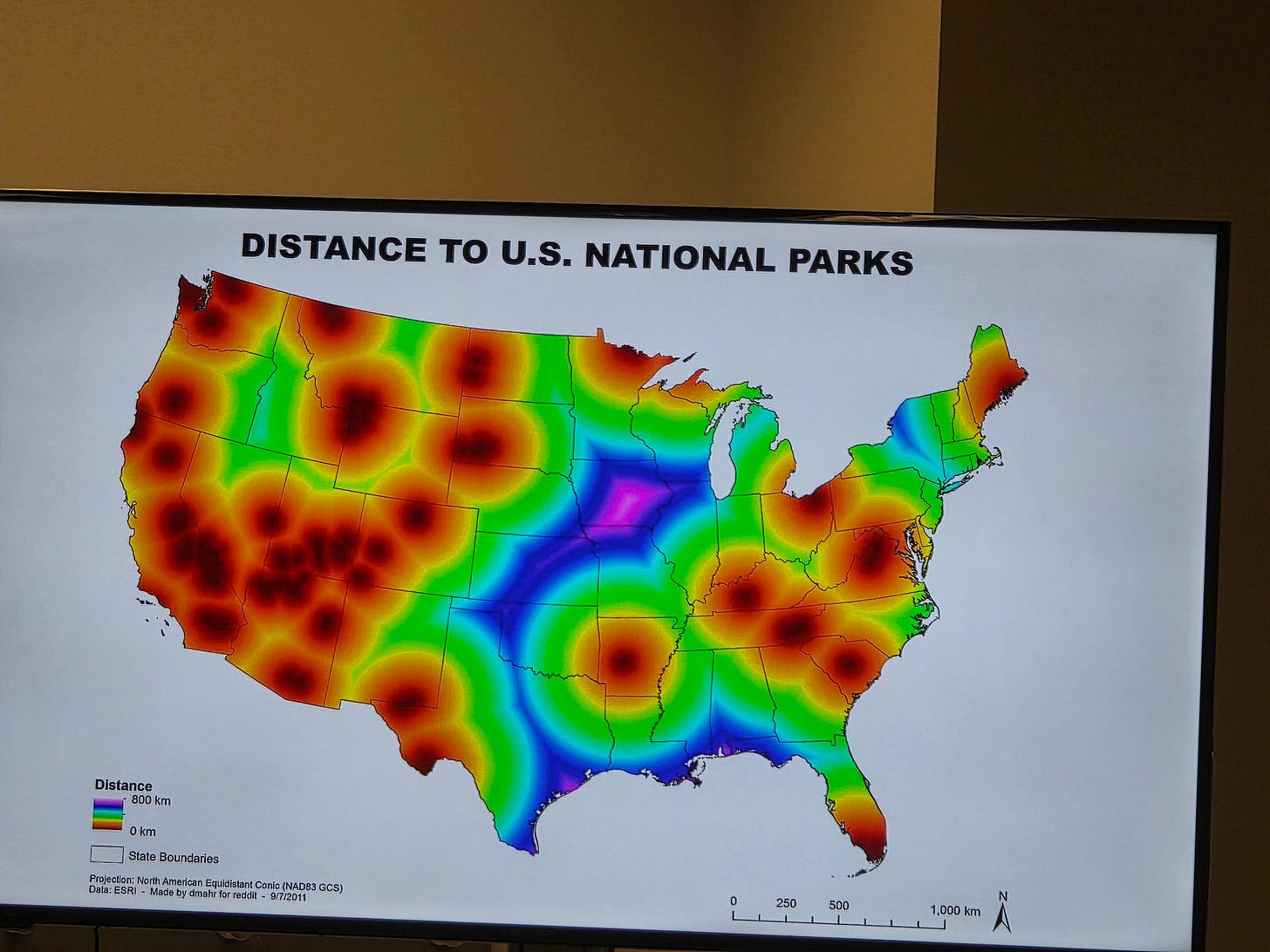
The wing is from a Polyphemus moth, similar to but not a Cecropia.
Thank you very much for pointing out that the golden oyster mushroom is yet another invasive exotic species. I am not at all happy to see it on my land, and eating it isn't even an option when it is growing way up on big dead trees. An expert mycologist has pointed out that the supplies of dead wood in natural areas are not unlimited, and that the golden oyster is undoubtedly displacing native mushrooms. And to top it off, I'd bet very few people are even asking whether the explosion of outdoor mushroom farming and drafty-building mushroom farming means that other invasive exotic mushrooms will escape and will start to spread and further reduce the ecological integrity of our already-compromised woodlands.